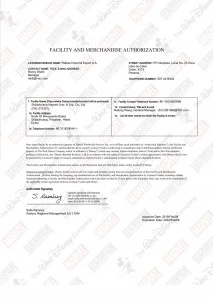 rainwears@163.com may@may-rain.com
rainwears@163.com may@may-rain.com Mon to Friday: 8.00 am - 7.00 pm
Mon to Friday: 8.00 am - 7.00 pm
Exploring the Cost Trends of Umbrellas in Today's Market
Understanding the Factors Influencing Umbrella Prices
Umbrellas are ubiquitous items in our daily lives, serving as shields against rain and sun alike. However, the prices of umbrellas can vary significantly, influenced by a multitude of factors. Understanding these factors can not only help consumers make informed purchasing decisions but also provide insights into market dynamics.
One of the primary factors affecting umbrella prices is the material used in their construction. Higher-quality materials, such as fiberglass ribs and waterproof fabric, often lead to higher costs. For instance, a sturdy umbrella designed to withstand strong winds will typically be more expensive than a basic plastic model. This is because durable materials not only enhance the umbrella's longevity but also improve its functionality. Consumers seeking a reliable means of protection will often invest more in these premium products.
Design and brand reputation also play a crucial role in determining umbrella prices. Designer brands that focus on aesthetics and innovation can charge significantly more than generic brands. A fashionable umbrella with unique prints or mechanisms—like automatic open and close features—can attract a higher price point. Furthermore, brand loyalty is a powerful motivator. Customers may be willing to pay a premium for a recognizable brand known for quality and durability, believing that a higher price correlates with better performance.
Seasonality and demand fluctuations can cause price variations as well. For example, during rainy seasons or in regions prone to inclement weather, the demand for umbrellas typically surges. Retailers may capitalize on this demand, leading to increased prices. Conversely, during off-peak seasons when umbrellas are less sought after, prices might drop to encourage sales. This cyclical pricing trend reflects how supply and demand dynamics influence the cost of everyday items.
umbrella price

Economics also plays a significant role in umbrella pricing. Factors such as inflation can affect manufacturing costs, which in turn impacts retail prices. If the cost of raw materials rises, manufacturers may pass these costs onto consumers, resulting in price increases. Additionally, shipping costs can fluctuate based on fuel prices and global trade conditions, further complicating the pricing structure of imported goods, including umbrellas.
The accessibility of umbrellas can also influence their price. Urban areas with higher living costs often see inflated prices due to increased operational expenses for retailers. In contrast, rural areas may enjoy lower prices due to reduced demand but could also face limited availability. Overall, geographical location significantly impacts consumer pricing and the types of umbrellas available.
Online shopping has changed the landscape of umbrella pricing significantly. E-commerce platforms offer a wider variety of options often at lower prices due to lower overhead costs compared to traditional brick-and-mortar stores. Consumers can easily compare prices and models, leading to more competitive pricing in the market. This increased transparency benefits buyers, allowing them to find the best value for their money.
Finally, environmental considerations are becoming increasingly important in the pricing of umbrellas. Eco-friendly options made from sustainable materials may come at a premium compared to standard models. As more consumers become aware of climate change and environmental degradation, the demand for sustainably produced goods, including umbrellas, is rising. Brands that align with these values often justify higher prices based on ethical production practices.
In conclusion, the price of umbrellas is influenced by various interrelated factors, including materials, brand reputation, design, demand, economic conditions, geographical location, online market competition, and environmental considerations. Understanding these elements can empower consumers to make informed decisions, ensuring they invest wisely in a product that meets their needs. Whether one opts for a high-end designer option or a budget-friendly choice, there is a wealth of options available, catering to the diverse preferences of consumers.
-
Children's Fashion Waterproof Printed Raincoats | Kids Gear
NewsJul.31,2025
-
Silver Printed Women’s Jacket – Stylish, Lightweight & Trendy Outerwear
NewsJul.30,2025
-
Fashionable Design Long Raincoat Rain Poncho Waterproof Polyester
NewsJul.30,2025
-
High Lighting Reflective Rain Jacket Windbreaker Safety Jacket for Adult
NewsJul.29,2025
-
Disposable PE Rain Poncho - Lightweight, Waterproof, Easy to Carry
NewsJul.29,2025
-
Stylish Lady Coat Women Jacket – Trendy & Elegant Outerwear
NewsJul.29,2025































